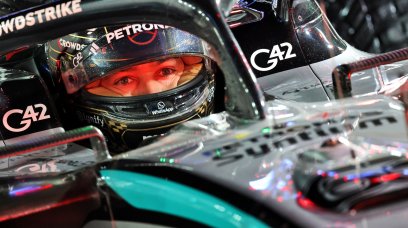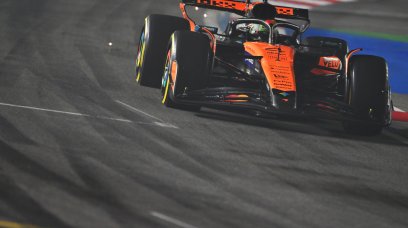When F1 arrives in Austin in three weeks, a key word of late will again be at the forefront of conversation - upgrades.
Most teams will use the United States Grand Prix weekend to announce what will almost certainly be the last major update package of the year. Red Bull, in particular, will be pulling out all the stops to get the RB20 back to the front and inject new life into the fight for this year's F1 championships.
Red Bull has to because in the last few races, McLaren, in particular, has made clear it is significantly faster. It has a 41-point lead in the constructors' championship and seems on course for a first title since 1998.
The situation is less dire for Max Verstappen in the drivers' standings as he holds a 52-point cushion over Lando Norris, with 180 up for grabs from the six remaining grands prix and three sprints, although the Dutch driver is unsure he can win a fourth crown.
So Red Bull is going all out with a final big update in Austin. It has been suggested it could fix the dysfunctional balance problems of the car and decide the title fight in Red Bull's favour. Red Bull, though, is taking a huge gamble for several reasons.
Viewed by others:
Separate weekends
Let’s start by stating the obvious - an update does not always mean progress. Just ask Ferrari. The Scuderia was in great shape at the start of the European part of the season following the introduction of a major update for the Emilia Romagna Grand Prix at Imola.
A few weeks later, the team was brought crashing back down to earth when additional updates ahead of the Spanish GP failed to work, forcing Ferrari to take a few steps back before it could become competitive again.
And at Red Bull, an update has not always worked. The new floor for the car at the British GP was meant to solve problems but only served to create more. Generally, an update generally needs time to bed itself in, and that is where the next hurdle comes in.
The weekend in Austin is not a 'normal' one as it includes a sprint, meaning only one free practice session to run the rule over any changes that have been made, followed immediately by sprint qualifying, and with it parc fermé.
Yes, you are allowed to make adjustments after the sprint, but this, too, has often caused more problems than it has solved.
With six race weekends remaining, you would think there is enough time to make any update work, but here again, there are catches.
After Austin, F1 immediately heads to Mexico and then Brazil. Three races in a row is never ideal, and the circuits in Mexico and Brazil are also more special than others. Mexico is at high altitude, which makes the aerodynamic balance completely different and Brazil is again a sprint weekend.
So one wrong turn in Austin and there is a serious chance a team could struggle for all three weekends, which would prove disastrous for the title fight.
Red Bull is at least fortunate it has this 'autumn break' before Austin, affording it three weeks to prepare, although even then it is handicapped to a certain extent by a shortage of wind tunnel and development time.
Wondering what Red Bull has already done this year and what's in the pipeline? RacingNews365 technical expert Paolo Filisetti explains it to you in the article below. The text continues below.
Viewed by others:
A car is for 2025 not just 2024
So as you can see, there are still a lot of question marks around the upcoming 'Austin update' for Red Bull, which is also significant in another way.
From January 1, 2025, teams can finally start work in earnest on developing the all-new 2026 car which will incorporate a new power unit, and with it, inherent aerodynamic changes.
It means 2025 will almost be a 'gap year' for many of the teams given the focus and resources required for 2026.
That does not mean to say the teams will abandon 2025 completely, but the car that starts next year will very much be a carry-over from the one that ends this season.
So whoever ends this year strongly is likely to hit the ground running next term, further highlighting the importance that the updates on the car in Austin could have a major impact on not only the final six races of 2024 but the start of 2025.
The United States Grand Prix promises to be fascinating event for more reasons than one.
Also interesting:
In a very special episode of the RacingNews365 podcast, lead editor Ian Parkes and Nick Golding are joined by three-time F1 world champion Sir Jackie Stewart. The current F1 season, the sport's safety and Lewis Hamilton joining Ferrari are leading talking points.
If you'd rather watch than listen - the video is available here!
Don't miss out on any of the Formula 1 action thanks to this handy 2026 F1 calendar that can be easily loaded into your smartphone or PC.
Download the calenderMost read
In this article





























Join the conversation!